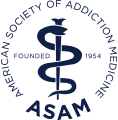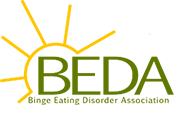Overeating from time to time is not harmful; however, those who have binge-eating disorder have tremendous difficulty stopping themselves from eating over-sized portions and staying within healthy guidelines. Furthermore, their challenges surrounding controlling their eating are not a matter of willpower.
Understanding Binge-Eating Disorder
Learn about binge-eating disorder
Different from bulimia, those with binge-eating disorder do not feel the need to vomit or use laxatives after a binge. Binge-eating disorder can have a serious impact on all realms of an individual’s life. Thankfully with treatment, these symptoms can be treated appropriately.
Statistics
Binge-eating disorder statistics
Within any given year, more than 1% of people are diagnosed with binge-eating disorder throughout the country. During the course of their lives, roughly 3% of individuals will battle with binge-eating disorder, with 3.5% of these individuals being females and 2% being males. Sadly, only about 44% of those who are diagnosed with this disorder obtain the treatment needed to help them heal their relationship with food.
Causes and Risk Factors
Causes and risk factors for binge-eating disorder
While the causes of binge-eating disorder are not entirely understood, studies suggest that a handful of genetic and environmental factors can impact this disorder, including:
Genetic: Similar to many other mental health conditions, family history can influence an individual’s likelihood of developing this type of eating disorder. Those who have family members who struggle with eating disorders are more likely to develop one themselves.
Environmental: Studies done on epigenetics show that environmental factors can trigger specific genes. While the exact interaction of environment and genetics is still being studied, experts have proven that specific environmental factors can be connected back to the increased risk of one developing an eating disorder. Those who grew up in families with parents who were focused on dieting or excessively exercising are more likely to find themselves struggling with binge-eating disorder than those who did not. Individuals who were teased about their weight also experience greater risk for developing this disorder.
Risk Factors:
- Family history of mental illness
- Personal history mental illness
- Personal history of extreme dieting
- Age, specifically being in one’s late teens or early 20s
- Having poor self-esteem
- Being dissatisfied with one’s own skills and/or accomplishments
Signs and Symptoms
Signs and symptoms of binge-eating disorder
The signs and symptoms connected to binge-eating disorder vary from one individual to the next, and depend on one’s personal history and personality. There are some similarities in those who battle with this disorder, and some of the most common effects of it can include:
Behavioral symptoms:
- No longer participating in things that were once enjoyed
- Hindered academic or occupational functioning
- Excessive desire to eat even after one feels full
- Eating a substantial amount of food over a short period of time
- Hiding one’s eating
- Dieting frequently and often unsuccessfully
- Eating alone or eating in secret
Cognitive symptoms:
- Intrusive thoughts about one’s eating habits
- Distraction or poor attention from excessive focus on food
Psychosocial symptoms:
- Guilt or shame
- Suicidal thoughts
- Poor self-esteem
- Negative self-image
Effects
Effects of binge-eating disorder
Binge-eating disorder has the potential to significantly harm someone who is struggling with it. Below are some of the many negative effects of this disorder if it goes untreated:
- Social isolation
- Suicidal thoughts or attempts
- Poor functioning at work or school
- Development of co-occurring mental health disorders
- Gastrointestinal distress
- Loss of job or expulsion from school
- Strained or broken relationships
Co-Occurring Disorders
Binge-eating disorder and co-occurring disorders
Those who struggle with binge-eating disorder often tend to battle with additional co-occurring mental health conditions, such as:
- Bipolar disorder
- Posttraumatic stress disorder
- Obsessive-compulsive disorder
- Depressive disorders
- Anxiety disorders

























